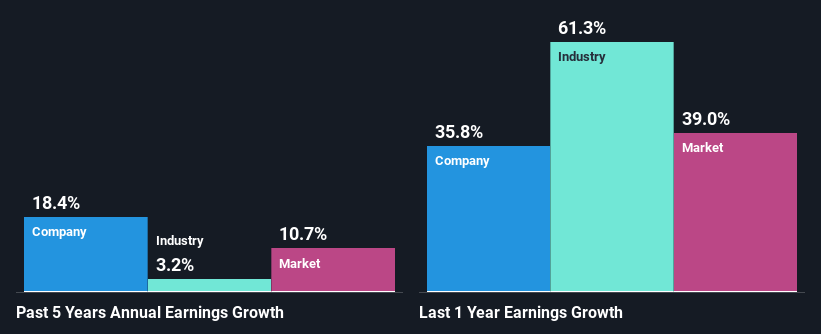Is Integral Diagnostics Limited's (ASX:IDX) Latest Stock Performance Being Led By Its Strong Fundamentals?
Integral Diagnostics' (ASX:IDX) stock up by 4.6% over the past three months. Given its impressive performance, we decided to study the company's key financial indicators as a company's long-term fundamentals usually dictate market outcomes. Particularly, we will be paying attention to Integral Diagnostics' ROE today.
ROE or return on equity is a useful tool to assess how effectively a company can generate returns on the investment it received from its shareholders. Simply put, it is used to assess the profitability of a company in relation to its equity capital.
See our latest analysis for Integral Diagnostics
How Do You Calculate Return On Equity?
ROE can be calculated by using the formula:
Return on Equity = Net Profit (from continuing operations) ÷ Shareholders' Equity
So, based on the above formula, the ROE for Integral Diagnostics is:
12% = AU$31m ÷ AU$255m (Based on the trailing twelve months to June 2021).
The 'return' is the amount earned after tax over the last twelve months. So, this means that for every A$1 of its shareholder's investments, the company generates a profit of A$0.12.
What Has ROE Got To Do With Earnings Growth?
Thus far, we have learned that ROE measures how efficiently a company is generating its profits. We now need to evaluate how much profit the company reinvests or "retains" for future growth which then gives us an idea about the growth potential of the company. Generally speaking, other things being equal, firms with a high return on equity and profit retention, have a higher growth rate than firms that don’t share these attributes.
A Side By Side comparison of Integral Diagnostics' Earnings Growth And 12% ROE
To start with, Integral Diagnostics' ROE looks acceptable. Even when compared to the industry average of 12% the company's ROE looks quite decent. This probably goes some way in explaining Integral Diagnostics' moderate 18% growth over the past five years amongst other factors.
As a next step, we compared Integral Diagnostics' net income growth with the industry, and pleasingly, we found that the growth seen by the company is higher than the average industry growth of 3.2%.
Earnings growth is a huge factor in stock valuation. It’s important for an investor to know whether the market has priced in the company's expected earnings growth (or decline). This then helps them determine if the stock is placed for a bright or bleak future. What is IDX worth today? The intrinsic value infographic in our free research report helps visualize whether IDX is currently mispriced by the market.
Is Integral Diagnostics Using Its Retained Earnings Effectively?
While Integral Diagnostics has a three-year median payout ratio of 77% (which means it retains 23% of profits), the company has still seen a fair bit of earnings growth in the past, meaning that its high payout ratio hasn't hampered its ability to grow.
Besides, Integral Diagnostics has been paying dividends over a period of five years. This shows that the company is committed to sharing profits with its shareholders. Upon studying the latest analysts' consensus data, we found that the company is expected to keep paying out approximately 62% of its profits over the next three years. However, Integral Diagnostics' ROE is predicted to rise to 16% despite there being no anticipated change in its payout ratio.
Conclusion
On the whole, we feel that Integral Diagnostics' performance has been quite good. Especially the high ROE, Which has contributed to the impressive growth seen in earnings. Despite the company reinvesting only a small portion of its profits, it still has managed to grow its earnings so that is appreciable. That being so, a study of the latest analyst forecasts show that the company is expected to see a slowdown in its future earnings growth. Are these analysts expectations based on the broad expectations for the industry, or on the company's fundamentals? Click here to be taken to our analyst's forecasts page for the company.
This article by Simply Wall St is general in nature. We provide commentary based on historical data and analyst forecasts only using an unbiased methodology and our articles are not intended to be financial advice. It does not constitute a recommendation to buy or sell any stock, and does not take account of your objectives, or your financial situation. We aim to bring you long-term focused analysis driven by fundamental data. Note that our analysis may not factor in the latest price-sensitive company announcements or qualitative material. Simply Wall St has no position in any stocks mentioned.
Have feedback on this article? Concerned about the content? Get in touch with us directly. Alternatively, email editorial-team (at) simplywallst.com.

 Yahoo Finance
Yahoo Finance 
